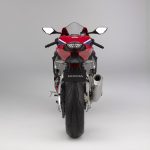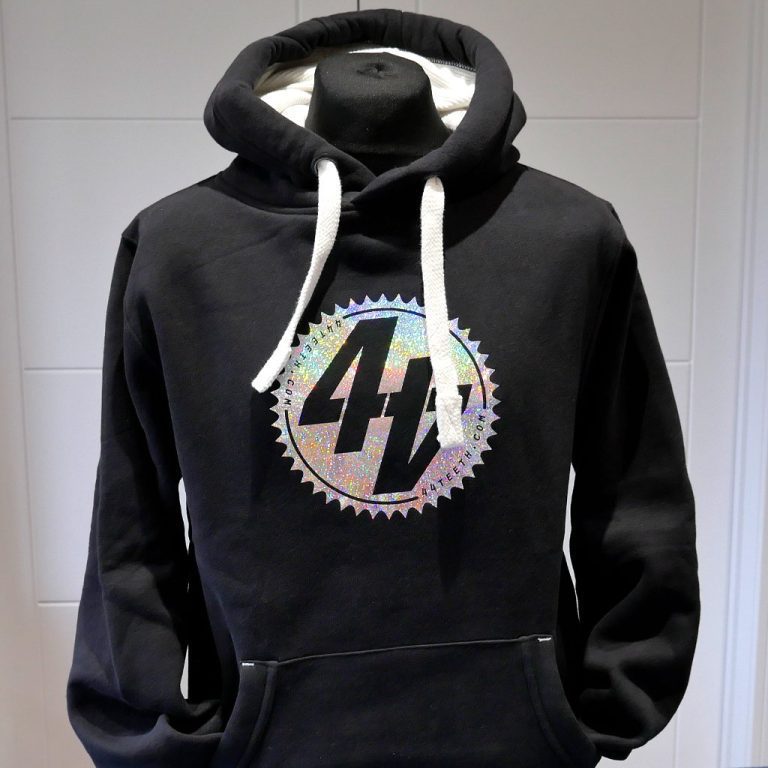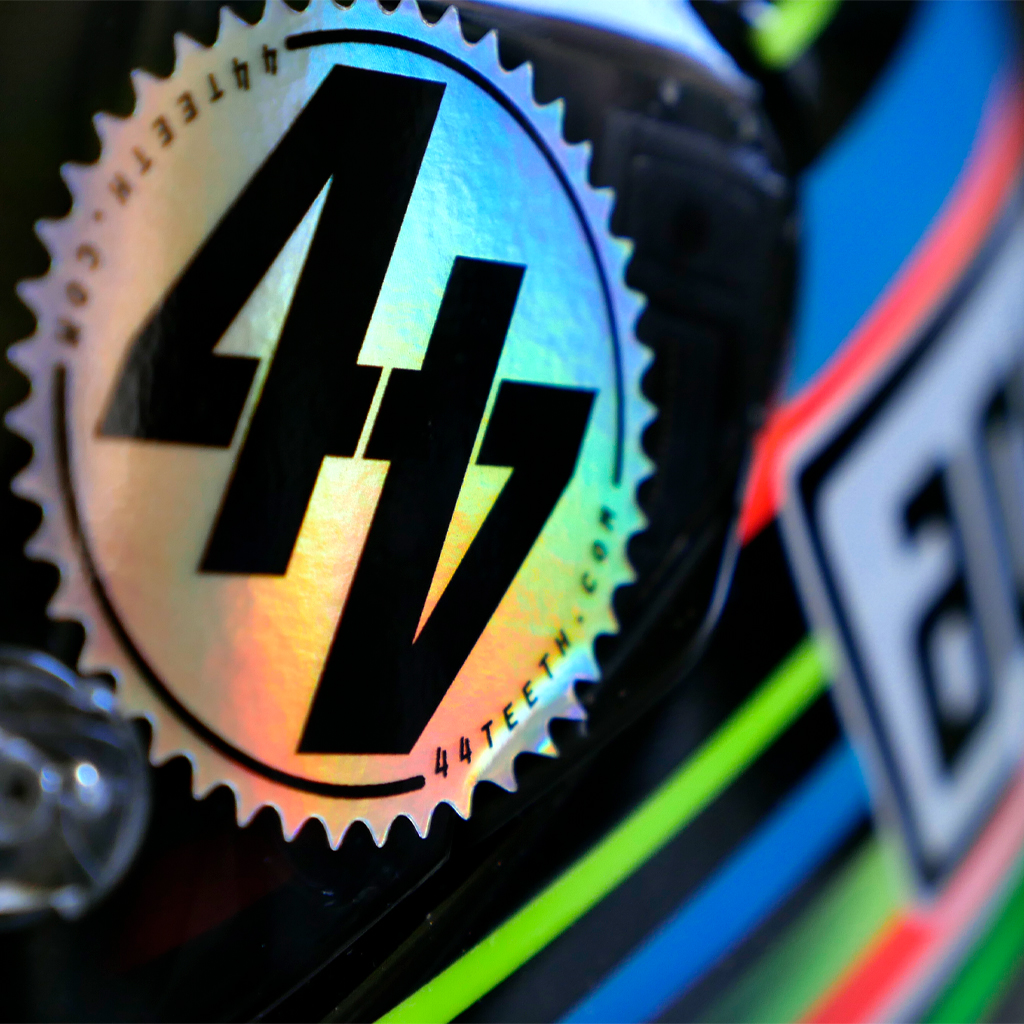
Honda is back. And back with two banging versions of an all-new Fireblade SP to celebrate this iconic steed’s 25th anniversary: a more basic ‘stock’ version (SP) and the SP2, which is, essentially, a homologation racing special complete with Marchesini rims, a revised cylinder head and a racing kit as an optional extra, reviving another iconic Honda name in the process. Both bikes feature…
- 189bhp (+11bhp)
- 15kg lighter at 195kg (kerb)
- Power-to-weight ratio improved by 14%
- Öhlins semi-active suspension
- Bosch MM5.10 5-axis Inertial Measurement Unit
- Engine braking control
- Quickshifter/auto-blipper
- Traction control
- Titanium fuel tank
- Brembo Monoblocs
- Cornering ABS
Ultimately, this is the fundamental package that any 2017 superbike should boast. Unyielding ‘Blade aficionados may be disappointed to learn there’s no V4 motor, instead opting for tweaking its predecessor’s lump. In fact, in many ways, it’s a case of ‘if it ain’t broke, don’t fix it,’ as much of the old bike’s base remains – just garnished with oodles of contemporary gadgets, technology and some rather sexy aesthetics that also ensure the ’17 RR is far sleeker and slimmer.
Still competitive in racing and nevertheless selling by the ton in its current guise, the ‘Blade has remained (virtually) unchanged since 2008. After sticking to the ‘Total Control’ mantra and zero electronic intervention, 2017 sees a raft of gizmos aboard the Fireblade – its foundation being a Bosch IMU (Inertial Measurement Unit) – and now Honda dubs this new era as ‘Next Stage Total Control.’ A play on contradiction, you could say…
Mr Sato, the SP’s Project Leader, reckons that, “its true purpose – wherever it’s ridden – is to enjoy something that is not normally experienced in everyday life, something that cannot be surpassed.” Amen to that, brother. Other than more power, less weight, and an arsenal of electronics, here’s what you need to know about the 2017 Honda Fireblade SP.
Engine: The 999cc inline four retains the 76mm x 55.1mm bore and stroke figure of the previous motor, though Honda has increased power and trimmed 2kg of weight by tinkering internally and upping compression to 13:1. Honda claim 189bhp @ 13,000rpm, which should equate to 170bhp at the rear wheel – on par with any other Euro4-compliant superbike so far. Bottom-end torque has also been improved, with peak figures stated as 116Nm @ 11,000rpm.
Valve lift and cam timing has been revised, and the crank, transmission and valvetrain all use higher spec’ materials to cope with extra power, more revs and its superior state of tune. The pistons are also redesigned and feature a new crown that helps the higher compression ratio.
An assortment of magnesium is used to shift mass, as is aluminium. The exhaust – with a can that looks suspiciously like the R1’s stock item – is titanium and contributes to the overall weight loss. The radiator is 30mm narrower and 100g lighter, and Honda went as far as shortening bolt lengths to trim mass.
There’s a new slipper clutch to work alongside electronic engine braking control and an auto-blipper, which means the 2017 Fireblade SP is the first Honda inline four to brag ride-by-wire, or Throttle-by-Wire (TBW) as Honda’s TLA (Three Letter Acronym) suggests. The more Gucci SP2 uses the SP’s motor as a base, but with a revised cylinder head (pistons, valves and combustion chambers) and elongated spark plugs among other trinkets.
Chassis: The aluminium twin-spar frame uses identical rake and trail numbers from previously (23.3°/96mm), although the rigidity balance of the frame has been adjusted and there’s a stiffer swingarm and lighter subframe. Honda reckons the frame is 10% more flexible in torsional plane, which supplies a more reactive chassis. Likewise, the wheelbase has been reduced to 1,404mm.
A lot of work has been carried out to the fuel tank – which is now titanium and just 16L – and the positioning of its weight. Four-piston Brembo Monoblocs supply braking power and surprisingly, yet unsurprisingly, Honda has opted to grace the rear wheel with a 190/50 section tyre.
Öhlins Electronic Control (S-EC) suspension is used and comes with NIX30 forks and a TTX36 shock, taking roll, yaw and lean angle data from the Bosch IMU (as well as wheel speeds, RPM, and throttle input) and altering damping on the fly. As with previous Öhlins semi-active suspension seen on other bikes, there are three manual modes and three automatic modes.


Electronics: Are you ready for some more acronyms? Good, now settle down. The aforementioned 5-axis Bosch IMU gathers a mass of data to consequently allow fine-tuning and lean angle functionality of traction control, anti-wheelie and cornering ABS. being 5-axis, there’s no sign of any slide control or similar heroics. As previously stated, this is the first Honda four-pot to use ride-by-wire and the Big H has taken tricknology from the RC213V-S by furnishing the new Fireblade with an Acceleration Position Sensor (APS) that converts throttle tube movement into a signal sent to the ECU. Posh ride-by-wire in essence.
Honda Selectable Torque Control (HSTC) is Honda’s version of traction control and offers nine different levels of intrusion, plus off. There are five options of power output (all with the same throttle response during initial opening), three levels of engine braking and even the quickshifter/blipper has varying choices. Important for some, all of which can be altered on the hoof via the switchgear and the SP’s full-colour TFT dash automatically adjusts to ambient lighting.
There are three riding modes: Mode 1 is dubbed ‘FAST’ and supplies a linear throttle response, low levels of traction control and engine braking intervention, and stiffer damping force. Mode 2 (FUN) culls output in the first three gears and electronic intervention is set at medium levels. SAFE is Mode 3 and control power in the first four gears. Yep, you guessed it: high levels of electronic intervention and softer damping. You also get two ‘User’ modes to dial in personal preferences.
More on prices, availability and other guff when we get it.

















